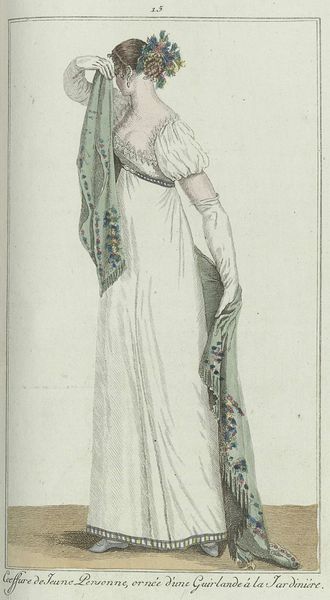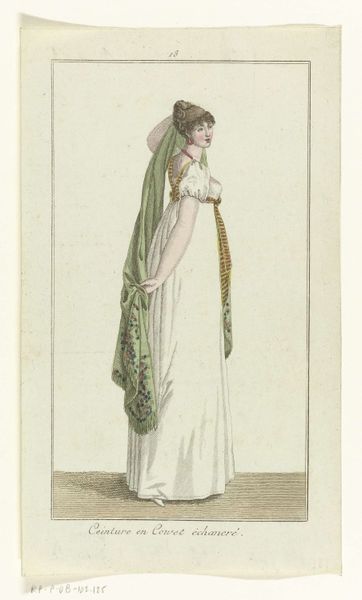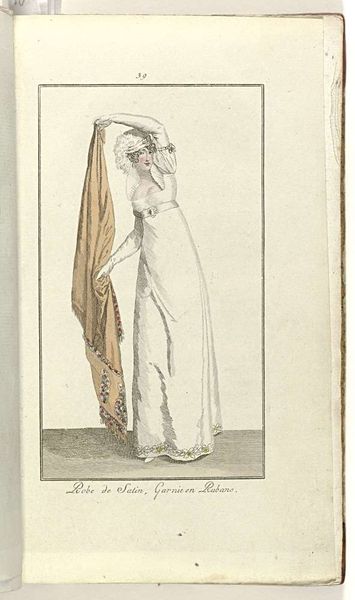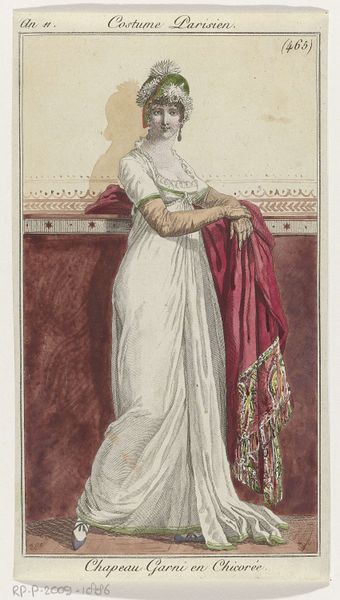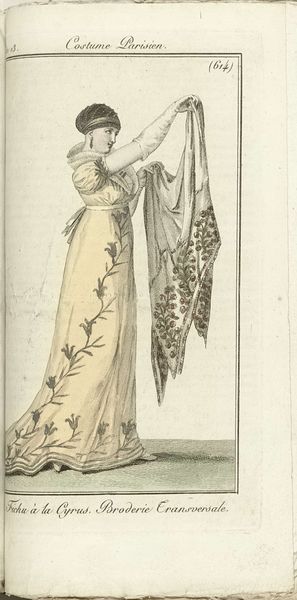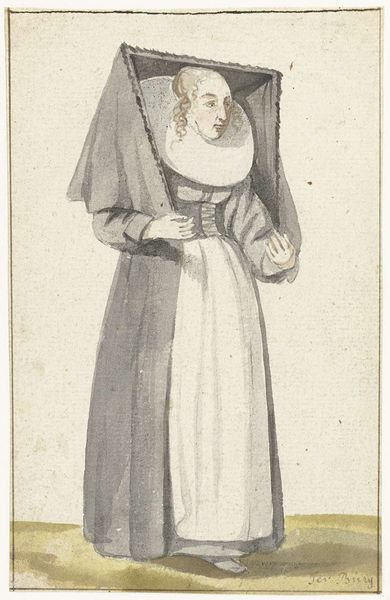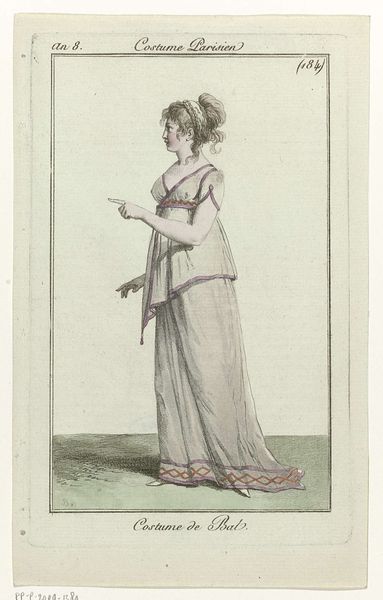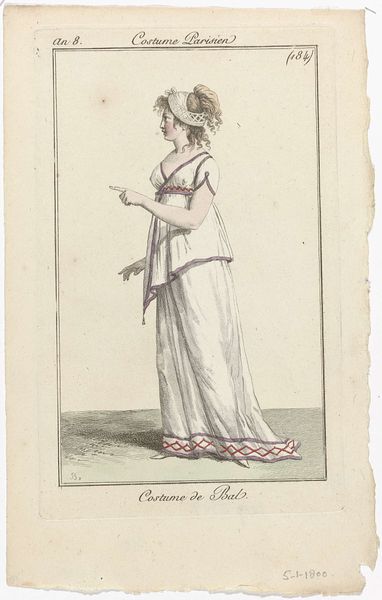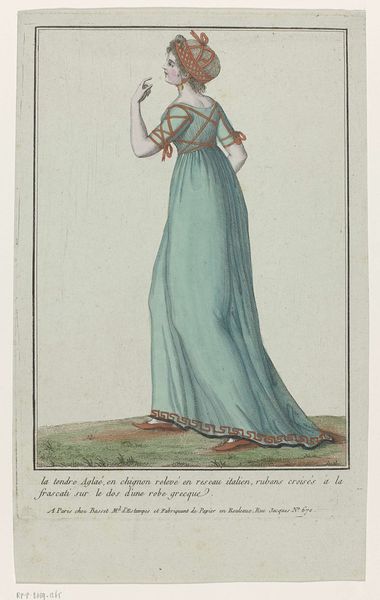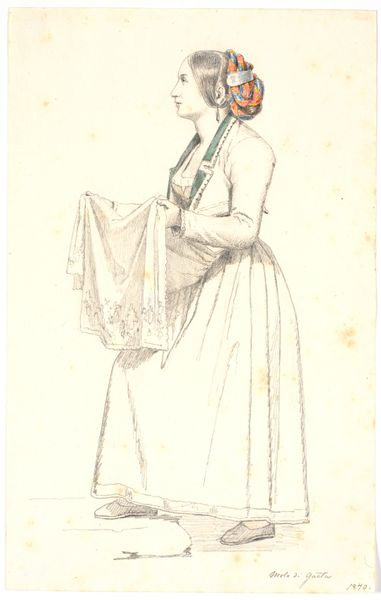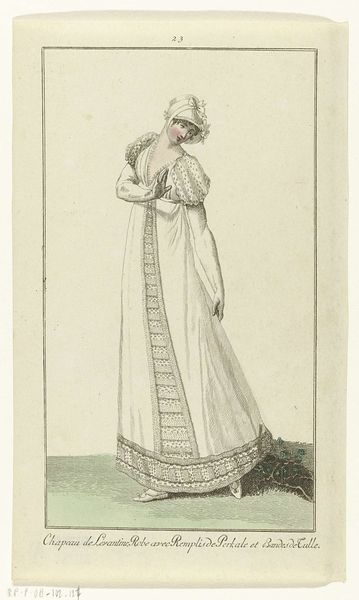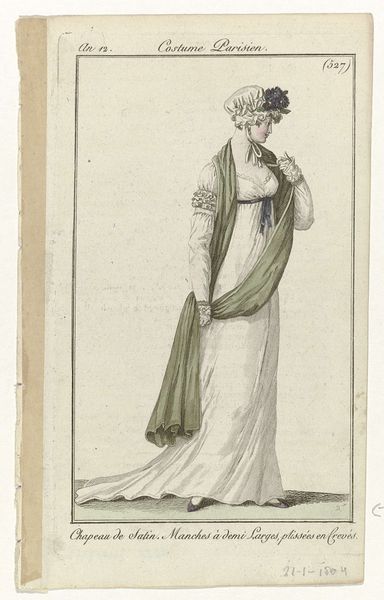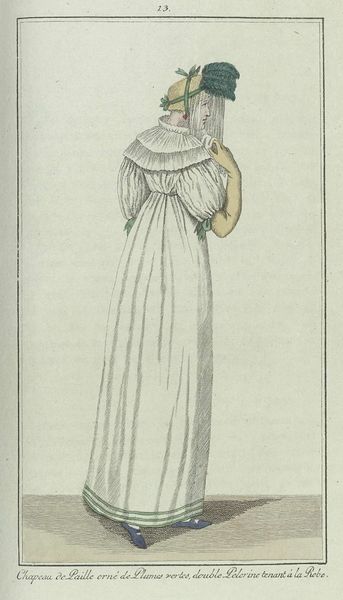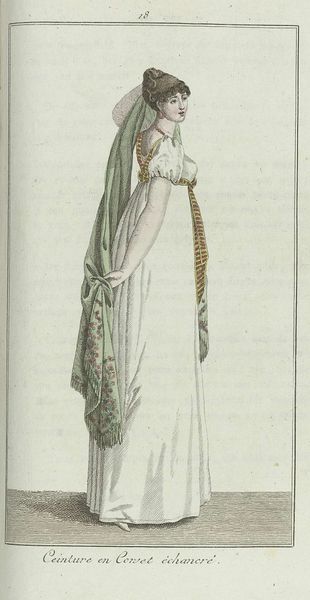
Elegantia, of tijdschrift van mode, luxe en smaak voor dames, Juli 1807, No. 15 : Coeffure de Jeune Personne,... 1807
0:00
0:00
drawing, print
#
portrait
#
drawing
#
neoclacissism
# print
#
traditional media
#
flower
#
watercolour illustration
Dimensions: height 183 mm, width 110 mm
Copyright: Rijks Museum: Open Domain
Editor: This is a print called "Elegantia, of tijdschrift van mode, luxe en smaak voor dames," from July 1807, a Neoclassical piece from an anonymous artist at the Rijksmuseum. The woman's pose with the shawl is very graceful. How can we interpret this as a symbol of its time? Curator: It's fascinating how fashion plates like these acted as a social mirror, reflecting and shaping ideals of femininity and class in the early 19th century. The figure embodies the Neoclassical taste for simplicity and elegance, drawing inspiration from ancient Greek and Roman styles. But beyond aesthetics, what societal values do you think this image is trying to promote? Editor: Perhaps, good taste, refinement, and… exclusivity? Fashion was definitely not accessible to all at this time. Curator: Precisely! The print appears in "Elegantia," a magazine title brimming with socio-cultural significance. How do you see that concept reflected in the overall composition? Consider the styling of the hair and the draping of the shawl as deliberate markers of status. Editor: The delicate watercolor illustration style and detailed rendering must have been desirable at that time. I wonder what that meant for the general public? Curator: Fashion was powerful back then, similar to how it functions now; these images shaped aspiration. And institutions like the magazine itself dictated trends and maintained existing class structures. It catered to a specific audience with both disposable income and a desire to assert their place in society. Editor: So it's not just about beautiful clothes but about participating in a particular vision of society. That gives the image a much greater significance than I initially perceived. Curator: Exactly. It’s a slice of life from a very specific segment of society, carefully constructed and curated for public consumption. Editor: That makes me think differently about fashion and art history, considering it from the social perspective rather than just aesthetics. Curator: That's a good point to have arrived at!
Comments
No comments
Be the first to comment and join the conversation on the ultimate creative platform.
